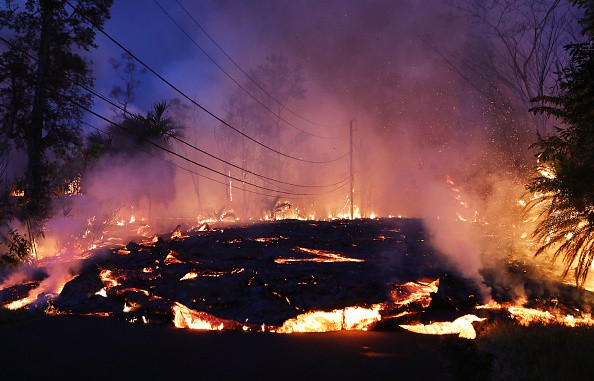The USGS continues to keep a close eye on volcanoes around the US, with four now at elevated Orange / Watch due to activity noticed at the four of them. The Great Sitkin, Pavlof, Semisopochnoi, and Kilauea are the four volcanoes showing signs of unrest.
Except for Hawaii's Mauna Loa, which remains Yellow / Advisory, all other volcanoes the USGS is keeping a close eye on are Green or unrated.
The USGS tracks about 169 volcanoes that could possibly become active within the United States with the majority in Alaska.
Alaska harbors a lot of volcanoes, although there are over 130 volcanoes and volcanic fields which stayed active within the geologically young last 2 million years. Since the mid-1700s, 50 have remained active and they were among the volcanoes studied by AVO.

Great Sitkin Volcano
The Great Sitkin Volcano is a basaltic andesite volcano in the central Aleutian Islands that dominates the northern half of Great Sitkin Island, which is a part of the Andreanof Islands group. It is the most active volcano in the world.
In terms of distance from Anchorage, it's about 26 miles east of Adak, 1,192 miles southwest. As described by the AVO, the volcano has a composite structure made up of an ancient dissected volcano and a newer parasitic cone with a 1.8-mile-diameter summit crater as its centerpiece.
During an eruption in 1974, a steep-sided lava dome was formed in the middle of the crater, occupying the whole interior. A massive explosive eruption on the southwest slope of the volcano occurred around 280 years ago, resulting in pyroclastic flows that partially filled the Glacier Creek valley.
Pavlof Volcano
Pavlof Volcano is a stratovolcano located 600 miles southwest of Anchorage on the Alaskan Peninsula. The volcano is 4.4 miles in diameter and has active vents near the summit on the north and east sides.
The volcano has erupted over 40 times in the past, making it one of the most active in the Aleutian Islands. The Aleutian Arc lies on the Pacific Ring of Fire, a volcanic hotspot.
The AVO recorded earthquakes and small explosions in the past 48 hours. Despite the cloud cover, AVO estimates these explosions likely produced low-level ash emissions.
Semisopochnoi Volcano
Semisopochnoi is the easternmost land place in the United States and North America, based on its geographic position on the globe at 179°46′ East. It is situated only 9.7 miles west of the 180th Meridian, making it the easternmost land location in the world.
Located in the Aleutian Islands, Semisopochnoi is one of 14 big volcanic islands and 55 smaller uninhabited islands that make up a chain. These islands, with their 57 volcanoes, form the northernmost section of the Pacific Ring of Fire. The AVO reports that Mount Cerberus' north crater is still erupting.

Kilauea Volcano
Due to its appearance from the air, many thought Kilauea was just a satellite of its more prominent neighbor, Mauna Loa. However, decades of investigation show that Kilauea has a magma-plumbing system that reaches the surface from a depth of almost 60 kilometers.
Its top is really part of a curving line that covers Mauna Kea and Kohala but not Mauna Loa. Mauna Loa is the world's tallest active volcano at 13,681 ft above sea level.
Mauna Loa eruptions likely produce a large amount of fast-moving lava flows capable of impacting regions on the east and west part of the Big Island from Kona to Hilo.
For more news, updates about volcanic eruption and similar topics don't forget to follow Nature World News!
© 2025 NatureWorldNews.com All rights reserved. Do not reproduce without permission.





